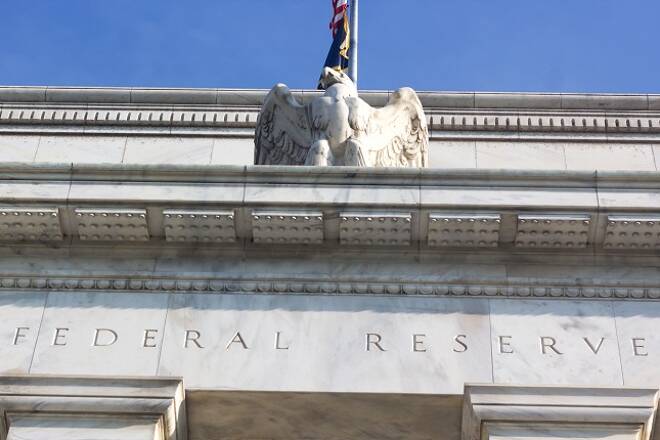Advertisement
Advertisement
Hawkish Fed Dictated the Price Action Last Week
By:
The U.S. Dollar traded mixed against the Australian Dollar, New Zealand Dollar and Japanese Yen last week, but overall, the U.S. Dollar Index futures
The U.S. Dollar traded mixed against the Australian Dollar, New Zealand Dollar and Japanese Yen last week, but overall, the U.S. Dollar Index futures contract was able to post a small gain for the week.
September U.S. Dollar Index futures finished the week at 91.967, up 0.314 or 0.34%.
The price action was primarily driven by a hawkish U.S. Federal Reserve. Secondary factors such as domestic reports, central bank activity and a general election also drove the price action in the three currencies.
The Fed drove U.S. Treasury yields higher on September 20, triggering a surge in the U.S. Dollar against all major currencies. Yields reached more than a two-month high after the U.S. Federal Reserve said it would begin reducing its $4.5 billion balance sheet starting in October. All nine members of the monetary policy committee voted for the action.
The announcement of the balance sheet reduction was the biggest news from the September meeting. Additionally, the Federal Open Market Committee left its benchmark interest rate unchanged at<1.25 percent.
The FOMC did indicate a possible third rate hike before the end of the year, which would bring the target up to between 1.25 percent and 1.50 percent.
The central bank also downplayed the impact of Hurricanes Harvey and Irma on the economy, saying that they “are unlikely to materially alter the course of the national economy over the medium term,” other than temporarily lifting inflation because of higher prices for gas and other goods for which the supply chain was disrupted.
Fed members also said that they now project faster growth for 2017, with a median forecast of 2.4 percent gross domestic product growth, versus a June projection of 2.2 percent.
Australian Dollar
An optimistic Reserve Bank of Australia (RBA) drove the Australian Dollar higher early in the week, but prices tumbled by the end of the week in reaction to the Fed’s hawkish tone.
The AUD/USD settled at .7959, down 0.0041 or 0.51%.
According to the minutes of the RBA’s September 5 meeting, the central bank remains upbeat on growth, indicating that it believes the economy is moving into a new phase as it shrugs off a lengthy downturn in mining investment while job market conditions also improve.
In the minutes, the RBA noted a broad job market improvement, and that recent data continued to support its forecast for 3.0 percent GDP growth in 2018.
New Zealand Dollar
The New Zealand Dollar posted a volatile two-sided move last week but by the end of week, buyers came in to support the market and drive it higher. The Kiwi was pressured by the Fed news, but supported by New Zealand election polls.
The NZD/USD settled the week at .7328, up 0.0040 or +0.55%.
The New Zealand Dollar traded at its highest level in 6 ½ weeks as one poll showed the country’s National Party pulled ahead of the rival Labour Party ahead of a general election this week-end.
Support for the National Party jumped 6 points to 46 percent, according to the One News-Colmar Brunton opinion poll, while support for the opposition Labour party slumped by seven points to 37 percent.
Japanese Yen
The direction of the Dollar/Yen last week was primarily driven by the strength in U.S. Treasury yields last week. The widening of the spread between U.S. Government Bonds and Japanese Government Bonds made the U.S. Dollar a more attractive investment.
The USD/JPY settled the week at 111.980, up 1.157 or 1.04%.
The Bank of Japan held monetary settings steady at its policy review meeting last week. It also asked investors to have faith that inflation will eventually hit its 2 percent target.
BOJ Governor Haruhiko Kuroda also downplayed any suggestion of a fresh rift in the board that could further delay any plan by the central bank to dial back its massive stimulus.
Kuroda said he saw nothing wrong with having a dissenter in the board and stressed the BOJ’s resolve to maintain or even ramp up its massive stimulus program.
About the Author
James Hyerczykauthor
James Hyerczyk is a U.S. based seasoned technical analyst and educator with over 40 years of experience in market analysis and trading, specializing in chart patterns and price movement. He is the author of two books on technical analysis and has a background in both futures and stock markets.
Advertisement
